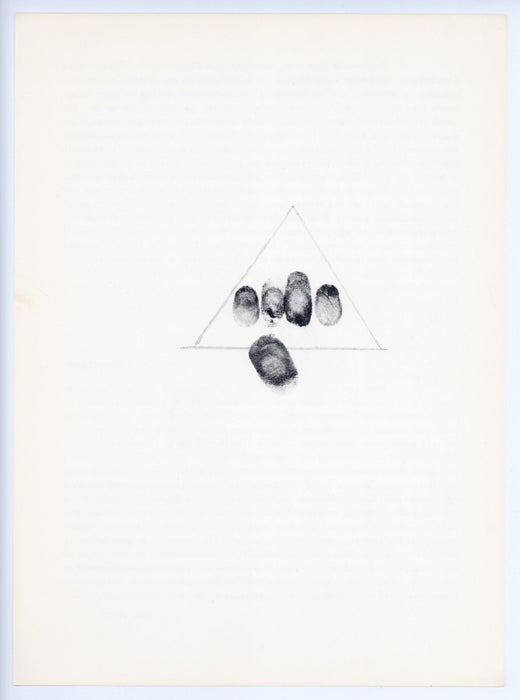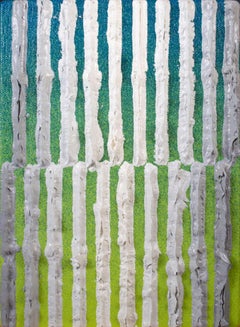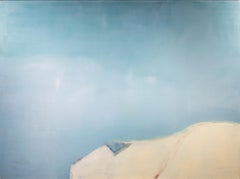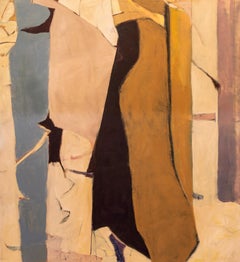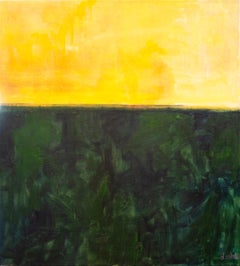Want more images or videos?
Request additional images or videos from the seller
1 of 9
Antoni TàpiesTapies Mid-Century Dau al Set Dada Spain Abstract Surrealism Dark Monster Signed1949
1949
$225,000List Price
About the Item
- Creator:Antoni Tàpies (1923 - 2012, Spanish)
- Creation Year:1949
- Dimensions:Height: 32.25 in (81.92 cm)Width: 28 in (71.12 cm)
- Medium:
- Movement & Style:
- Period:
- Condition:In good restored condition.
- Gallery Location:Milwaukee, WI
- Reference Number:Seller: 12818c1stDibs: LU605310820202
Antoni Tàpies
Antoni Tàpies is considered to be Spain's most important painter after Picasso. His work is in the collections of the most important modern and contemporary museums around the world, as well as those of the most notable private collectors. Tàpies’s ultra-typical style was an almost industrial look, expressionistic slashes, thick impasto, rough and impassioned.
About the Seller
4.9
Platinum Seller
Premium sellers with a 4.7+ rating and 24-hour response times
Established in 1966
1stDibs seller since 2017
447 sales on 1stDibs
Typical response time: 3 hours
Authenticity Guarantee
In the unlikely event there’s an issue with an item’s authenticity, contact us within 1 year for a full refund. DetailsMoney-Back Guarantee
If your item is not as described, is damaged in transit, or does not arrive, contact us within 7 days for a full refund. Details24-Hour Cancellation
You have a 24-hour grace period in which to reconsider your purchase, with no questions asked.Vetted Professional Sellers
Our world-class sellers must adhere to strict standards for service and quality, maintaining the integrity of our listings.Price-Match Guarantee
If you find that a seller listed the same item for a lower price elsewhere, we’ll match it.Trusted Global Delivery
Our best-in-class carrier network provides specialized shipping options worldwide, including custom delivery.You May Also Like
"The Scream", A 1950s Mid-Century Modern Surrealist Abstract Painting
By Harold Haydon
Located in Chicago, IL
"The Scream", A compelling, enigmatic 1950s Mid-Century Modern Surrealist Abstract Painting by Notable Chicago Artist, Harold Haydon (Am. 1909-1994). Executed in Haydon's unique, a...
Category
Mid-20th Century Surrealist Abstract Paintings
Materials
Oil, Canvas
$1,800
H 21 in W 17 in D 1 in
Agnoiaphobia – The Collective Unconscious - Oil Painting on Canvas
By Patrick Faure
Located in New York, NY
This 2019 painting is from Patrick Faure’s Agnoiaphobia series. The painting is unframed, oil on canvas.
About the Artwork:
According to the Swiss psychiatrist, Carl Jung, kollektives Unbewusstes, or collective unconscious, refers to structures of the unconscious mind that are shared among beings of the same species. The human collective unconscious is populated by instincts and by universal symbols such as hell, water, the tree of life, or the concept of god. Jung states that the collective...
Category
2010s Surrealist Abstract Paintings
Materials
Canvas, Oil
$13,777
Free Shipping
H 39.38 in W 59.06 in
Wings of Fascism - Oil on Canvas - Contemporary Painting
By Patrick Faure
Located in New York, NY
This painting is artwork of Patrick Faure, Creator of Faurism. The painting is unframed, oil on canvas.
About the Artwork:
Wings of Fascism is a perfect example of Faurism, a styl...
Category
2010s Surrealist Abstract Paintings
Materials
Canvas, Oil
$16,532 Sale Price
20% Off
Free Shipping
H 66.15 in W 84.65 in
Agnoiaphobia: Per Sempre, Non C’E - Oil Painting on Canvas
By Patrick Faure
Located in New York, NY
This 2019 painting is from Patrick Faure’s Agnoiaphobia series. The painting is unframed, oil on canvas.
About the Artwork:
“For ever and ever” is part of the doxology that falls...
Category
2010s Surrealist Abstract Paintings
Materials
Canvas, Oil
$11,021 Sale Price
20% Off
Free Shipping
H 39.38 in W 59.06 in
Wings of Fascism - Oil on Canvas - Contemporary Painting
By Patrick Faure
Located in New York, NY
This painting is artwork of Patrick Faure, Creator of Faurism. The painting is unframed, oil on canvas.
About the Artwork:
Wings of Fascism is a perfect example of Faurism, a styl...
Category
2010s Surrealist Abstract Paintings
Materials
Canvas, Oil
$20,665
Free Shipping
H 66.15 in W 84.65 in
Surrealist Composition, Untitled 2, Lambert Werner (1900-1983), Oil Canvas, 1948
Located in New York, NY
Lambert Werner (1900-1983)
Untitled, 1948
Oil on canvas
29 1/8 × 26 1/3 in l 74 × 67 cm
30 3/4 x 28 in l 78 x 71 cm (Frame included)
Signed and dated lower right
Exhibition history:...
Category
1940s Surrealist Abstract Paintings
Materials
Canvas, Oil
Lambert WernerSurrealist Composition, Untitled 2, Lambert Werner (1900-1983), Oil Canvas, 1948, 1948
$15,000
H 29.14 in W 26.38 in D 1.19 in
Surrealist Composition, Untitled, Lambert Werner (1900-1983), Oil Canvas, 1937
Located in New York, NY
Lambert Werner (1900-1983)
Untitled, 1937
Oil on canvas
21 7/10 × 19 7/10 in l 55 × 50 cm
23 2/3 x 21 2/3 l 60 x 55 cm (Frame included)
Signed and dated lower left
Exhibition histor...
Category
1930s Surrealist Abstract Paintings
Materials
Canvas, Oil
$15,000
H 21.66 in W 19.69 in D 1.19 in
"Two Seas and a Moon" Surrealism American Scene WWII Modern WWI Denver WPA Era
By Arnold Rönnebeck
Located in New York, NY
"Two Seas and a Moon" Surrealism American Scene WWII Modern WWI Denver WPA Era
Arnold Ronnebeck (1885 - 1947)
Two Seas and a Moon
30 x 22 1/2 inches
Oil on Canvas, c. 1943
Signed u...
Category
1940s Surrealist Figurative Paintings
Materials
Canvas, Oil
Landscape with window in D oil on canvas painting surrealist
Located in Barcelona, Barcelona
Felix Ferreras - Landscape with window in D - Oil on canvas
Oil measurements 73x100 cm.
Frameless.
Félix Ferreras is a visual artist with numerous national and international awards ...
Category
1990s Surrealist Landscape Paintings
Materials
Canvas, Oil
$1,143 Sale Price
40% Off
H 28.75 in W 39.38 in
me and my lovers oil on canvas painting surrealist abstract
Located in Barcelona, Barcelona
Felix Ferreras - Me and my lovers - Oil on canvas
Oil measurements 73x100 cm.
Frameless.
Félix Ferreras is a visual artist with numerous national and international awards and distin...
Category
1990s Surrealist Landscape Paintings
Materials
Oil, Canvas
$1,022 Sale Price
46% Off
H 28.75 in W 39.38 in
More From This Seller
View Allcontemporary abstract colorful acrylic painting impasto textured stripes signed
By Daniel Klewer
Located in Milwaukee, WI
This painting is a small and intimate example of the paintings of Daniel Klewer, coming from his series 'Linear Tactility.' The paintings in this series all share a consistent, linea...
Category
2010s Contemporary Abstract Paintings
Materials
Canvas, Oil
"Even Before Anything Happens, " Abstract Oil on Canvas by Deirdre Schanen
By Deirdre Schanen
Located in Milwaukee, WI
"Even Before Anything Happens" is an oil on canvas by Deirdre Schanen. The blue expanse is calm. At the bottom right is a cream colored expanse with a line of red down it and some ch...
Category
2010s Contemporary Abstract Paintings
Materials
Canvas, Oil
"The Days of My Amorous Life, " Earth Toned Oil on Canvas by Deirdre Schanen
By Deirdre Schanen
Located in Milwaukee, WI
"The Days Of My Amorous Life" is an oil on canvas by Deirdre Schanen. Earth tones create a rocky outcropping. The light comes from the left creating shadows and highlighted areas.
...
Category
2010s Contemporary Abstract Paintings
Materials
Canvas, Oil
"One Syllable, " Abstract Color Fields Oil on Canvas by Deirdre Schanen
By Deirdre Schanen
Located in Milwaukee, WI
"One Syllable" is an oil on canvas by Deirdre Schanen. Fields of colors are created next to each other. A yellow sky is created in the top of the piece with accents of orange and whi...
Category
2010s Contemporary Abstract Paintings
Materials
Canvas, Oil
"One" contemporary abstract expressionist oil painting on canvas by Alayna Rose
By Alayna Rose
Located in Milwaukee, WI
"One" is an original oil painting on canvas by Alayna Rose, signed in the lower left. In this composition, Rose has abstracted the side-profile of a head by filling it with an array ...
Category
2010s Abstract Expressionist Abstract Paintings
Materials
Canvas, Oil
colorful contemporary abstract oil painting expressionist busy signed
By Alayna Rose
Located in Milwaukee, WI
"Let It Happen" is an oil painting on canvas by Alayna Rose. The artist signed the piece lower right. This abstract painting features a variety of gestural and expressionist marks in various colors--green, blue, orange, white, black--over a background of bright red and pink.
Artwork Size: 14" x 11"
Custom framing is available.
Artist Bio:
Alayna Rose is a painter, jewelry designer and former illustrator. Her fashion jewelry has been featured in exclusive boutiques from Hawaii to the East Coast. In 1987 she was featured as an outstanding new designer in Accessories Magazine. Her copper enameled designs have been exhibited in shows in New York City, Chicago and other major venues in the United States. From 1990-2007 she was Vice President of a design company that specialized in illustrations for patent applications, trademarks and technical art. She studied with Gary Rosine, former department chair of Cardinal Stritch University’s Visual Studies Program, Kenn Kwint, nationally recognized Wisconsin painter and was mentored by one of Wisconsin’s most celebrated sculptors, Mary Nohl...
Category
Early 2000s Abstract Abstract Paintings
Materials
Canvas, Oil
